Semiprocal numbers - z to the power i
Categories: complex numbers imaginary numbers

In the article i to the power i we took a deep dive into the topic of raising a complex number to a complex power, which has a surprising result for the particular case of i raised to the power of i.
This time we will look at the general case of any complex number z to the power i, and how this relates to reciprocals. We will look at the idea of a semiprocal - a value that is "halfway" between a number and its reciprocal, in a specific way. This article is in part inspired by this Quora article by Job Bouwman.
z to the power i and semiprocal numbers
Let's define f(z) as z to the power i:
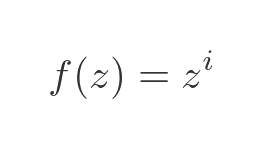
If we apply this function twice, we get this z to power i raised to the power i again. By the power to a power rule, this is z raised to the power of (i times i). And we know the i times i is -1:

So applying the f(z) twice gives the reciprocal of z:
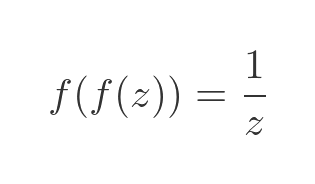
Since applying this function twice is the reciprocal, we could say that the function is halfway to being the reciprocal, or the semiprocal.
What do we mean by halfway?
Consider the number 2 and its reciprocal 1/2. There are many ways we could get from 2 to 1/2 in two steps. For example, could divide by 2 twice:
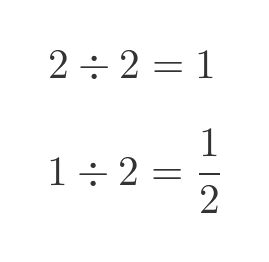
This technique calculates the reciprocal by applying two identical steps. But those steps cannot be expressed as functions of z. In this example, we divide by 2 twice because the original value of z was 2. But if the original value of z was 3, we would need to divide by 3 twice. This means that the function applied is not a pure function of z.
By contrast, z to the power i is a pure function of z. Applying that function twice results in the reciprocal of z. In this article, we consider halfway to mean the intermediate value after applying this function once.
There is no function in the real domain that has this property.
What is the value of the semiprocal?
So now we know what a semiprocal number is, how do we calculate it? Let's start by calculating it for a real number x. The semiprocal, s, of x is:
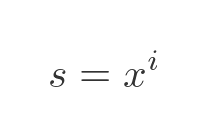
Since we know that the exponential function and the natural log are inverse, we can use this identity:
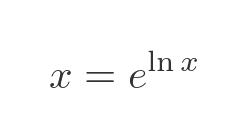
Substituting for x in the previous formula gives:
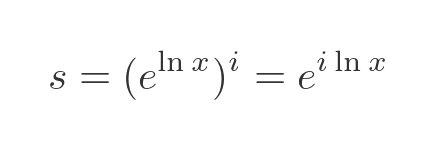
We know from Euler's formula that a value of the form:

Represents a complex number in the modulus-argument form, with a modulus of r and an argument θ. In our case, the modulus r is 1 and the argument θ is ln x, so we have:

Showing semiprocals on an Argand diagram
As we saw, the semiprocal of a real number has a modulus of 1, so it is located on the unit circle on an argand diagram. The semiprocal of 2 has an angle of:

This means that the semiprocal of 2 is equal to:

The semiprocal of 3 has an angle of:

This means that the semiprocal of 3 is equal to:

The reciprocal of 2, of course, is 1/2, and for 3 it is 1/3. Here are the values on an Argand diagram:
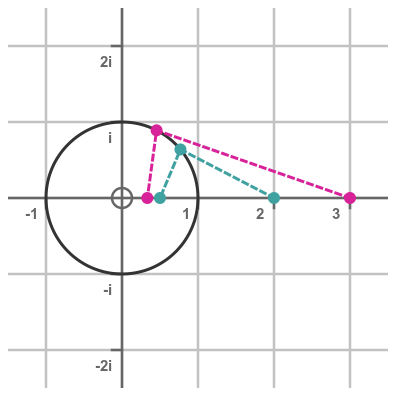
The cyan dots show the value of 2 and 1/2 (on the real axis), and the semiprocal of 2 on the unit circle. The dotted lines connecting these points are simply there to indicate that they are all related to the value 2, they don't have any other significance. The magenta dots show the equivalent values for 3.
Negative semiprocals
There is a second function f(z) that can be used to calculate different semiprocal:
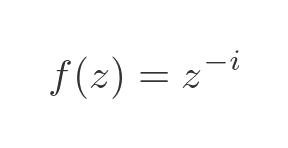
This can be shown quite easily by calculating f(f(z)). The two negatives cancel out in the i times i term:

If we recalculate the semiprocals of 2 and 3 using this second formula, we get alternative values that are reflected over the real axis (i.e. their imaginary components are negated so they are complex conjugates):
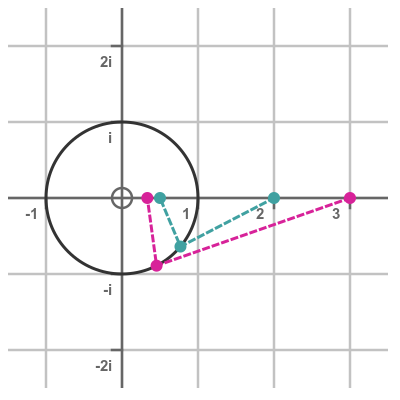
Numbers generally have 2 semiprocals (except for special cases that we will look at below), in a similar way to numbers having 2 square roots.
Alternative form using the ith root
Since we know that i squared is -1, we can also show that -i is equal to 1/i:
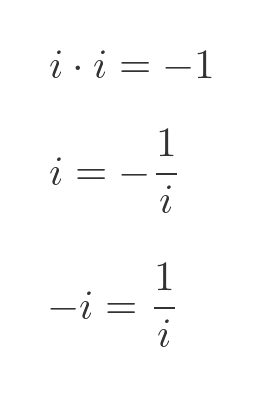
This gives us an interesting alternate form for f(z) in the negative sense:

So the semiprocal can be defined as the ith root of z.
An interesting visualisation of the semiprocal
We can define a parametric equation, with parameter t, for any given value of z, like this:
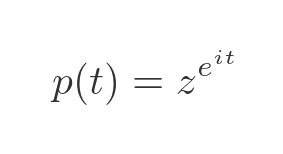
For any value of t, this equation defines a point p(t) in the complex plane. As t varies (but z stays fixed), this equation defines a curve in the complex plane (shown below). Using Euler's formula, we can find the value of the exponential term for several particular values of t:

Substituting these values into the original formula gives:
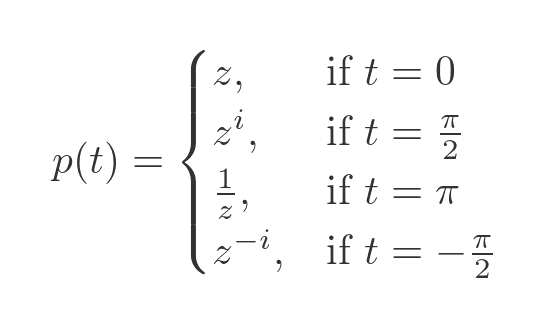
The 4 points correspond to z, the positive semiprocal of z, the reciprocal of z, and the negative semiprocal of z. So the parametric curve passes through all 4 points. Here is the curve p(t) for z values of 2 and 3:
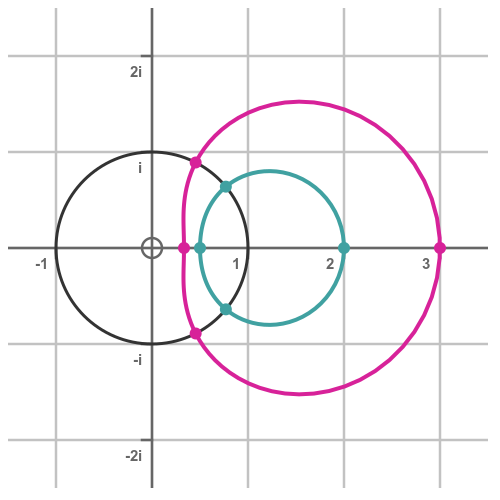
Here is what the curves look like for z values up to 6:
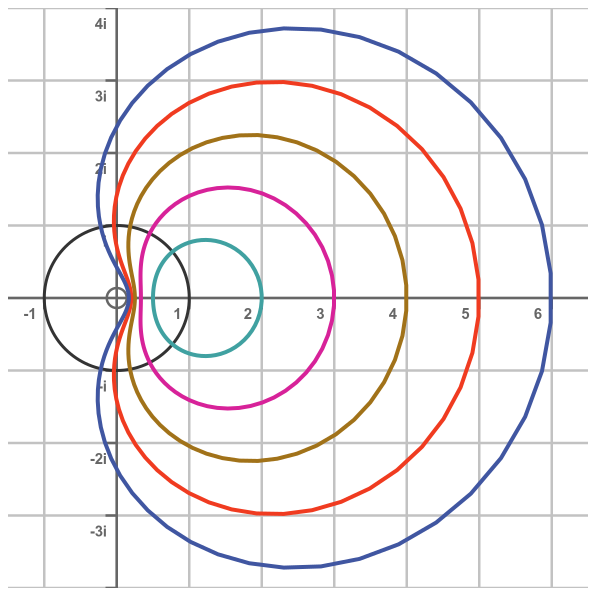
What does the curve mean?
Here is the curve p(t) for real z value 2:
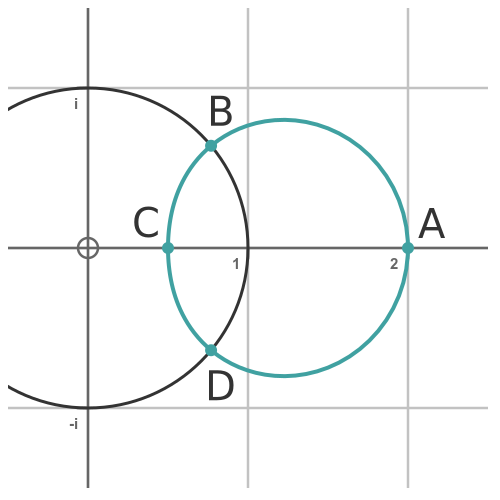
We have marked the 4 points as A to D. As we already know, if we apply f(z) this takes us to point B (which is 2 to the power i), and if we apply f(z) again takes us to point C, which is 1/2, the reciprocal of A.
What happens if we apply f(z) again, to the value 1/2? Well, this takes us to point D - you can easily verify that by evaluating the equation. And if we apply the function again, we get back to A.
This shouldn't really surprise us. Applying f(z) twice gets us the reciprocal of z. If we apply f(z) twice to 2 we get 1/2, so of course if we apply f(z) twice to 1/2 we get 2, which gets us right back to point A.
Also, notice that point D is the reciprocal of B (they are both on the unit circle, and the angle of D is the negative of the angle of B, so they are reciprocals) so again it should be no surprise that applying the function twice to B results in D.
To understand all the other points of the curve we need to extend the idea of semiprocals to cover something that we might call n-procals.
n-procals
Our current f(z) is based on a t value of π/2. This is where the z to the power i function comes from:

What happens if we start with a t value of π/3? This gives us a different f(z):
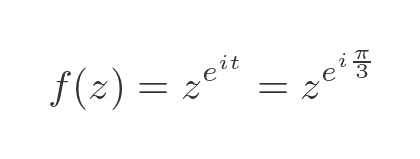
This function is approximately equal to z to the power (0.1670 + 0.7989 i). Here is f(f(z)):

This function has a t value of 2π/3 and is approximately equal to z to the power (-0.5835 + 0.3994 i). And here is f(f(f(z))):

This is equal to exactly 1/z. This means that applying the function 3 times is equivalent to the reciprocal. We could call this function the 3-procal. Notice that the intermediate values are also on the curve because they have the same formula p(t), with t values of π/3 and 2π/3. Here is the curve for z of 2, showing the values, and the equivalent conjugate values corresponding to t values of 4π/3 and 5π/3:
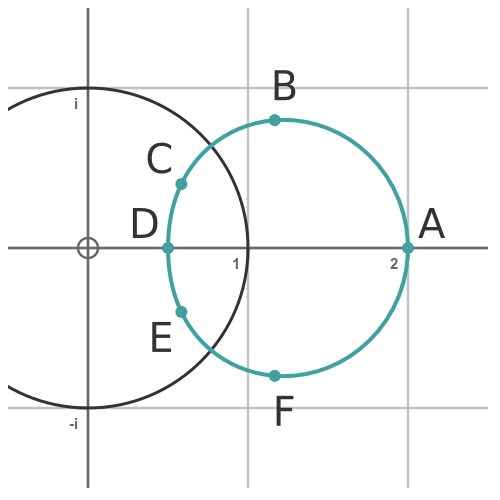
If we repeat this using a starting t value of π/4, we would find that applying the function 4 times is equivalent to taking the reciprocal - they would be 4-procal values. This would create some extra points that are also on the same curve. Repeating this for any value n will create a set of n-procal values that are all on the curve.
The curve is, in fact, the locus of all the n-procal values of 2.
Semiprocals of complex numbers
So far we have dealt with the case where z is a real number (we have used real values 2 and 3 in most of the examples). What if z is a general complex number?
It is possible to find the semiprocal of a general complex number z. This involves finding z to the power w (where w is also a general complex number). This is shown Complex powers and roots, but the equations are not particularly pleasant. It is easiest to express z in modulus argument form, and w in the standard form:
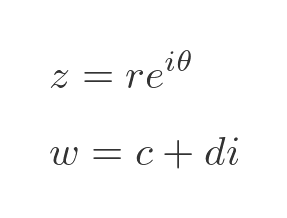
This results in the following formula:

We won't look at this in any more detail here, it might be the subject of a future article.
Related articles
- Imaginary and complex numbers
- Complex number arithmetic
- Argand diagrams
- Why does complex number multiplication cause rotation?
- Modulus-argument form of complex numbers
- De Moivre's theorem
- i to the power i
- Euler's formula and its proof
- Complex powers and roots of complex numbers
- Complex polynomials
- Complex number trigonometry functions
Join the GraphicMaths Newsletter
Sign up using this form to receive an email when new content is added to the graphpicmaths or pythoninformer websites:

Popular tags
adder adjacency matrix alu and gate angle answers area argand diagram binary maths cardioid cartesian equation chain rule chord circle cofactor combinations complex modulus complex numbers complex polygon complex power complex root cosh cosine cosine rule countable cpu cube decagon demorgans law derivative determinant diagonal directrix dodecagon e eigenvalue eigenvector ellipse equilateral triangle erf function euclid euler eulers formula eulers identity exercises exponent exponential exterior angle first principles flip-flop focus gabriels horn galileo gamma function gaussian distribution gradient graph hendecagon heptagon heron hexagon hilbert horizontal hyperbola hyperbolic function hyperbolic functions infinity integration integration by parts integration by substitution interior angle inverse function inverse hyperbolic function inverse matrix irrational irrational number irregular polygon isomorphic graph isosceles trapezium isosceles triangle kite koch curve l system lhopitals rule limit line integral locus logarithm maclaurin series major axis matrix matrix algebra mean minor axis n choose r nand gate net newton raphson method nonagon nor gate normal normal distribution not gate octagon or gate parabola parallelogram parametric equation pentagon perimeter permutation matrix permutations pi pi function polar coordinates polynomial power probability probability distribution product rule proof pythagoras proof quadrilateral questions quotient rule radians radius rectangle regular polygon rhombus root sech segment set set-reset flip-flop simpsons rule sine sine rule sinh slope sloping lines solving equations solving triangles square square root squeeze theorem standard curves standard deviation star polygon statistics straight line graphs surface of revolution symmetry tangent tanh transformation transformations translation trapezium triangle turtle graphics uncountable variance vertical volume volume of revolution xnor gate xor gate
